Originally posted Dec 2014
Introduction
On a diatonic harmonica, you can get ALMOST all 12 chromatic notes using basic draw and blow bends. There a few missing notes, however.
Are these missing notes needed? For me, yes. Here are a couple real-world reasons.
Example #1: Middle Octave Cross Harp
In Cross Harp, you can bend the draw notes from holes 1-4 and get expressive, soulful MINOR sounds. As soon as you cross over to hole 6 and higher, however, you’ll notice that traditional players switch to a MAJOR sound. They can’t play 2nd position minor stuff up high, because normal bending won’t give you the minor 3rd or flat 5th of the scale. It’s true, you can get a super-high minor 3rd using the 10 blow bend, but there’s a whole middle octave that you miss out on without overblows.
Example #2: Quirky Major-Key Melodies
The melody to The Star-Spangled Banner mostly follows the major scale, which makes 1st position our preferred position. However, the phrase “By the dawn’s early light” contains a “sharp 4th” scale degree. That’s F# when the song is played in the key of C. This note is available in the low octave using a draw bend, and it’s available in the high octave using a blow bend, but it’s missing in the middle octave, where most people prefer to play major key melodies in first position. There are lots of folk songs, anthems, fiddle tunes, and pop songs that are 90% fine in first position, but require a sharp 4th scale degree somewhere along the line.
Getting the Missing Notes
Overblows and overdraws are bending techniques that give you those missing notes. The techniques have been around at least since the 30s, but only became really popular after the pioneering work of Howard Levy in the 80s and 90s. Other modern overblowers include Youtube favorites Adam Gussow and Jason Ricci.
Most blues-oriented players will, at minimum, be interested in the 6 overblow, since it gives you the minor 3rd in cross harp, a note you could previously only get on the low end.
How To Overblow on Hole 6:
1. Make sure you have consistent, clear single notes.
2. Learn to blow bend really well on holes 8-10. It’s a good idea to practice blow bends on lower harps, like G and A.
3. Switch to a higher harp, such as a C or D.
4. Adjust your reed gaps so they’re very close on 6 blow and draw, but just open enough so they don’t jam when you play at normal volume.
5. Attempt to blow bend on hole 6.
6. The blow reed will choke, then you’ll hear a pitch that’s a step and a half (aka minor third) higher than the blow note.
Troubleshooting:
1. Make sure you’re actually on hole 6 blow. Lots of folks land accidentally on hole 7 and are amazed at their ability to “overblow,” when they’re actually just bending the 7 blow down slightly. An overblow chokes, then produces a HIGHER pitch.
2. Distorted sounds: if you get both reeds playing at the same time, you haven’t properly choked the blow reed. Take it back a step and spend more time learning to play normal blow bends on holes 8-10 on a low harp.
3. Shrill Ringing / Squealing: this is torsional vibration (think of that oldtimey video of the suspension bridge twisting). Gap the reeds a little closer. Consider putting a small amount of soft wax or a light dab of nail polish on the rivet head and base of reed. If using nail polish, LET IT DRY COMPLETELY. You don’t want to breathe nail polish fumes.
Frequently Asked Question:
“Are any harps better for overblows than others?”
In general, I think higher-pitched harmonicas like C and D will tend to be easier for beginners to learn to overblow on.
As far as brand and model, I think with good technique, you can play limited overblows on almost any reasonaly well-made harp, out of the box. With gapping and other setup techniques, you can overblow fluently on pretty much any harp.
That said, the ideal out-of-the-box harmonica for overblowing will come from the factory with close tolerances (ie slots and reeds well-fitted to each other) and close-ish gaps.
I had a good experience with my Suzuki Firebreath in C. It was noticeably more airtight and responsive than my Special 20s and Golden Melodies. It also cost twice as much!
Basically, the higher-end models from most brands will require less setup. However, even these will probably require slightly tighter gapping. Off the top of my head, we’re talking about the Suzuki Firebreath, the Seydel 1847, and the Hohner Crossover.
Learn to do basic setup, though, and you can get good results from the standard models at half the cost.
Richard Sleigh is a good resource for materials on how to set up harmonicas for overblows. I’m not a paid affiliate or anything, I’ve just learned a lot from him and think he’s the clearest, best authority out there on setting up your harp.
Summary
Learn to blow bend. Learn to gap your reeds. Get the 6 overblow, then the 5, then the 4. Learn to play the 7 overdraw and the 9 overdraw. It’ll be tough, but you can also get the 1 overblow and the 10 overdraw.
Further Study
Learn the note layout on your C harp, and take time to absorb some music theory, so you’ll start to understand better how the overblow notes fit into the positions you want to play in, and how to use them musically in the style you’re working on.
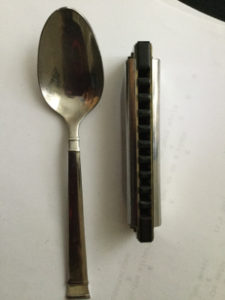 Landing consistently on the 3 draw with a half-step bend is essential for cross harp blues, and it’s especially important if a song is in a minor key. As many have noted, you can play minor over a major song, but you can’t play major over a minor song.
Landing consistently on the 3 draw with a half-step bend is essential for cross harp blues, and it’s especially important if a song is in a minor key. As many have noted, you can play minor over a major song, but you can’t play major over a minor song. 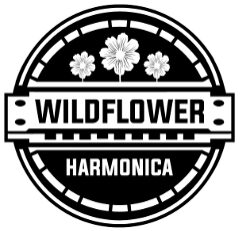
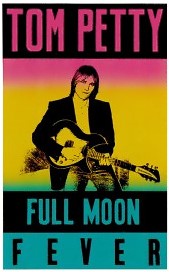 Musical Crossword Puzzles
Musical Crossword Puzzles More 3rd Position Songs
More 3rd Position Songs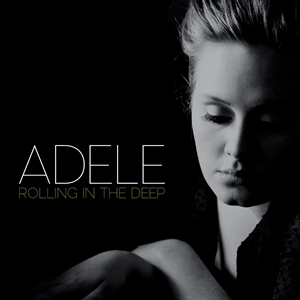 I got an email from a student recently – his band plays “Rolling in the Deep,” by Adele, in the key of C minor. What key harp to use?
I got an email from a student recently – his band plays “Rolling in the Deep,” by Adele, in the key of C minor. What key harp to use?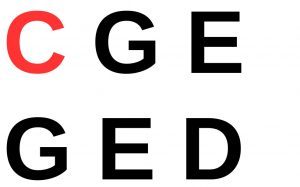 I’ve been working for the last couple of years with harmonica students who have limited vision. They needed large-format music, and the dots and lines were becoming too difficult to discern.
I’ve been working for the last couple of years with harmonica students who have limited vision. They needed large-format music, and the dots and lines were becoming too difficult to discern. 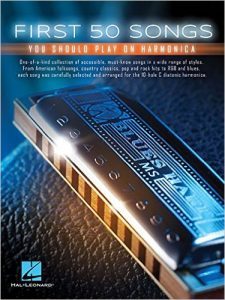
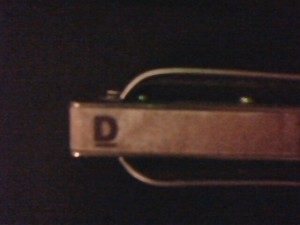 I play Celtic music on the diatonic harmonica, and have noticed that my standard high D harp, when played in the middle octave, holes 4-7, sounds an octave higher than the fiddle and fits into the mix similarly to a tin whistle. It’s a nice sound to blend, but it can get a little shrill, especially by itself.
I play Celtic music on the diatonic harmonica, and have noticed that my standard high D harp, when played in the middle octave, holes 4-7, sounds an octave higher than the fiddle and fits into the mix similarly to a tin whistle. It’s a nice sound to blend, but it can get a little shrill, especially by itself. 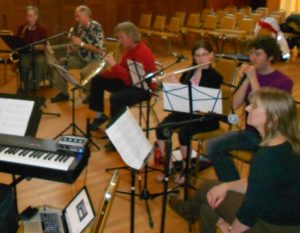 I’m playing diatonic harmonica in an Early Jazz ensemble at the Vermont Jazz Center right now, and part of the fun is looking in my harp case at the 12 different keys and deciding which one best fits the song.
I’m playing diatonic harmonica in an Early Jazz ensemble at the Vermont Jazz Center right now, and part of the fun is looking in my harp case at the 12 different keys and deciding which one best fits the song.